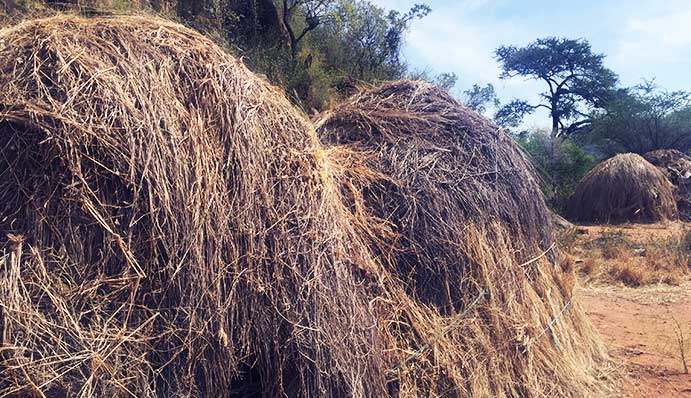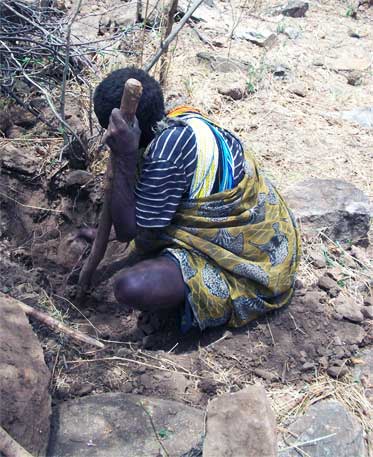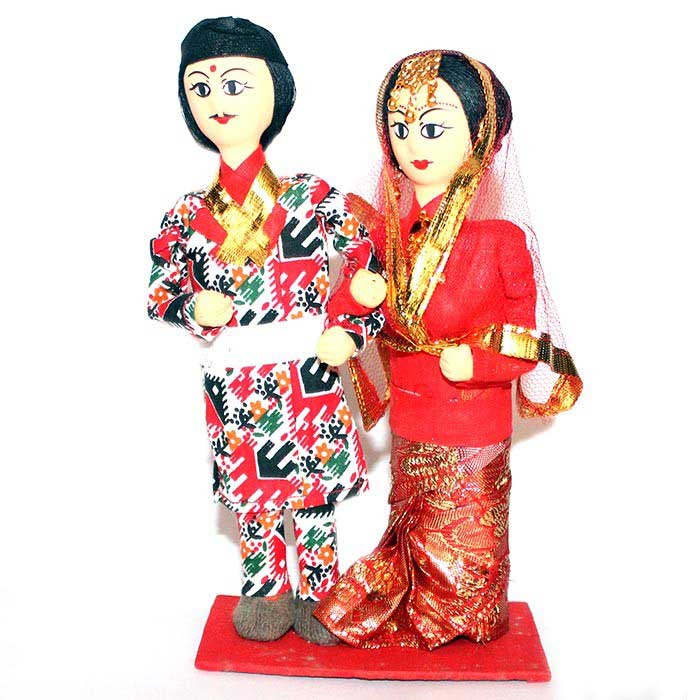 By Tony Spence
By Tony Spence
As the sun rises over the Tanzanian plane, two Hadza hunters glide across the landscape towards the bush – bow and arrow in hand – as they seek the day’s prize. The mythical baobab tree casts long shadows across the arid ground as the hunters pause to inspect fresh tracks, before silently panning out across the ground in their chosen direction.
The Hadza of Northern Tanzania are one of the last hunter-gatherer people on Earth. They hunt by bow and arrow, they dig for roots by sharpened stick and they gather honey and fruit by hand. It is a unique lifestyle in a world that has transformed around them.
The modern hunter-gatherers now face some very unique challenges as they struggle to adjust their traditional lifestyle to the modern world. As a result, the Hadza people are now at a crossroads, facing serious issues regarding their future development as it becomes harder to secure food and resources.
As the two hunters continue towards their prey, Oricho, a 35-year-old Hadza man who has honed his skills since he was old enough to walk, explains that today his world is changing:
‘I am a Hunter, that is my profession, but now it is not often that I can kill an animal for food’.
Stories of the Hadza people tend to depict the last of a traditional culture that is corrupted by modern change, of a group that live ‘10,000 years in the past’ and struggle to maintain a lifestyle that is being forced into extinction.
Such a unique lifestyle understandably invokes mystery and the allure of a time in which people were closer to nature. However, it is important that we do not allow a romanticized perspective to cloud the complex development challenges faced by the Hadza and ignore their own desire to adapt. We must question why the idea of a hunter-gatherer community is attractive to us as outsiders whilst supporting their culture and reflecting on what is at stake for the people themselves.

Fresh elephant tracks – still warm – remind the hunters that they must tread with caution as they track their prey. As the party winds its way through a dry river bed, each step heavy under the sand, huge deep tracks indicate that the animals may be close. As an old respected nemesis of the Hadza, the hunters are careful to avoid coming face to face with a herd as they share their backyards. A deep huff and puff sounds across the treeline and the hunters remain motionless as the herd pass by with heavy thudding footsteps.
It is important that we do not allow a romanticized perspective to cloud the complex development challenges faced by the Hadza and ignore their own desire to adapt.
Two hours into the hunt, Oricho raises his hand as a signal to stop. His partner Chief stops in his tracks with one foot hovering motionless above the ground. The hunters listen. Suddenly, the two Hadza men look to their right, place their arrows between their legs with lightning speed and draw their bows. In less than a second, they release their shots towards a group of Gazelle bounding across the plane.
See also:
The hunters fire off 4 shots in quick succession before walking calmly to inspect their haul. All shots have missed. Oricho smiles and shakes his head as he struggles to dislodge an arrow that has ploughed through the trunk of a tree. The hunters will not bring back meat for the Hadza today; it has been 3 weeks since their last kill.
It is not often that the daily commute involves a face-to-face meeting with one of the largest land mammals on earth and work includes the need to hunt and kill the day’s meal. This is why the Hadza lifestyle is so alluring to an outsider. However, it is vital to remember that the Hadza story is not one of a group that live in the past but instead one of a people who are adapting to today’s difficult and unpredictable life.
Who are the Hadza?
As dawn approaches, Athuman sits cross-legged amongst a group of Hadza elders on the hard floor of a concrete ruin. What once might have been a medical clinic in construction is now a crude grey refuge from the surrounding bush. Athuman wears shorts, sandals, a blazer jacket and colourful head and wrist tribal beads unique to the Hadza. At 90 years of age, he is a man that lived before the Hadza had any real contact with the rest of the world. His bow lies next to him – a knife sheathed to one side – as he rolls tobacco and prepares to tell the story of the Hadza.

The Hadza are arguably one of the oldest lineages on earth and may have roamed the Lake Eyasi basin in Northern Tanzania for tens of thousands of years, following animal migration routes and moving at will.
In the late 1960’s the Tanzanian government launched the ‘Villagization’ policy, which was aimed at settling the various tribes across the country in order to secure longer-term economic and social development. The Hadza were tracked down in the bush by government officials and were transported to a static village close to the northern Tanzanian town of Mbulu.
Athuman explains that the Hadza were provided with houses, food, schools and medical clinic.
‘When I moved from the bush, I was so happy because I saw changes, for example I had the assurance of food every day which I was not used to,’ he explains.
However, within two years, the new lifestyle became a struggle for the Hadza and they reportedly failed to adapt. Lack of support or education, a difficulty in integrating with new tribes and devastation from smallpox all contributed to their alienation.
Athuman goes on to describe how the Hadza were provided with resources, but not provided with the education that was necessary to maintain the new lifestyle. As a result, they did not understand that their shift was permanent and more support and guidance would follow. Soon, the Hadza began to build their traditional straw houses next to their new permanent houses and gradually began to wonder back into the bush.
‘We have been provided with seeds and equipment but not the knowledge to cultivate….many people do not put the seeds in the ground to grow crops but just grind them up to eat them’.
The final event was the outbreak of smallpox which devastated the Hadza; Athuman himself lost 4 children to the epidemic. The Hadza linked this outbreak to the new lifestyle and food and made the decision to move back to the bush.
After some time living a nomadic life in the area, the Hadza settled in a new location and continue to maintain their traditional lifestyle till today.
Struggle for Adaptation
For the Hadza, it has become clear that a hunter-gatherer lifestyle cannot be fully sustained in a world that has changed dramatically. Encroachment from surrounding tribes has made their life rather static. There are fewer animals to hunt and ongoing issues of land ownership. This all means that they cannot follow animal migration routes and hunt all year. The Hadza are struggling to maintain a livelihood, as there are fewer resources to support their lifestyle. This has resulted into a number of problems, including hunger and adverse health issues
The Hadza and Agriculture
All of the tribes that live alongside the Hadza are agriculturalists or pastoralists, but the uptake of these practices within the Hadza is very rare.
Moses, the Hadza Community Development Officer, kneels next to his traditional straw hut which interestingly encases a modern tent, as he explains:
‘We have been provided with seeds and equipment but not the knowledge to cultivate….many people do not put the seeds in the ground to grow crops but just grind them up to eat them’.
Moses goes on to highlight the issue that those Hadza who have begun to cultivate are experiencing with the transition:
‘Some Hadza have started to cultivate, whereas others have not. The people who have not started cultivating themselves become dependent on those that grow food.’
Although a lack of resources and equipment is undoubtedly an issue, the key challenge with the uptake of agriculture appears to be education and training. Even with this in place it is worth noting that neighbouring tribes have often struggled to produce a good harvest due to the fertility issues of the ground, which means that learning to cultivate is still no easy solution for the Hadza.
Tourism and the Hadza
The Hadza are also dependent on a type of ‘adventure’ tourism in which small groups of people visit to stay in a mock village where their traditional lifestyle is showcased.
The Hadza are generally positive and welcoming towards the idea of tourism, although there is a note of caution on how it should be managed. As one Hadza community member notes:
‘We like tourism, but we don’t want to be divided by people that just want us to remain in the bush with a traditional lifestyle.’
This highlights a complicated issue for the Hadza, as there is a fear in the community that development and tourism cannot go hand in hand as people want to visit a ‘traditional culture’. The Hadza community member goes on to explain the catch they are facing:
‘I am worried that when we start to develop, the tourists will stop coming. But The U.K. has tourism, the U.S.A. has tourism, and they are still very developed countries. There is no reason we cannot develop and still showcase our traditional lifestyle’.
Community sharing system
The Hadza traditionally exercise a community sharing system in which food and resources are shared equally amongst community members. This is now seen by many Hadza as a major factor in hindering development, as that system of sharing makes it difficult to accumulate wealth. For example, those that cultivate or have more food or resources must always share with others, meaning that people are never able to build up a certain amount of resources for themselves to further their own development.
There has been a fundamental change in this area as the Hadza adapt to the new economic environment and have begun to trade meat and other products with surrounding tribes.
There has been a fundamental change in this area as the Hadza adapt to the new economic environment and have begun to trade meat and other products with surrounding tribes.
As Oricho explains:
‘Now there are less animals, if someone makes a kill then they may wonder why they should give this to the community as they do not know when the next kill will be, which means they now start to share only a small amount and then sell the rest to buy things. The new tribes began the change in the sharing system as they opened shops and sold things, so people think if they don’t give things for free then why should we.
The community sharing system was designed for a nomadic lifestyle and a time in which lots of animals were around to kill, but the new context has created new dependence relationships.
This practice is a major change from the traditional lifestyle of the Hadza but is arguably accepted as a necessary change in order to adapt to the ‘modern’ world.
Hadza & Technology
A communications tower has recently been constructed in the village providing the Hadza with access to a mobile phone network for the first time ever. This will now open up a whole new channel of communication for the Hadza. They can now contact medical clinics, traders and friends in neighbouring villages without having to physically travel unannounced. The communications tower is very new for the Hadza and many are still undecided on how it will affect their community. However, the speed in which they can now communicate will likely open many new avenues.
Maria is a 30 year old Hadza woman who sheds light on the possibilities of new technology in the community:
‘Before, we did not need machines to grind maze as we used our hands, now we have seen how technology simplifies work, and we want to be part of this. The most important thing we need is education, even if you provide us with money or machines, if we don’t have knowledge on how to use them then our plans will fail.’
Maria has highlighted an interesting factor to reflect upon, in that although a ‘traditional’ lifestyle may be alluring for an outsider, modern technology undoubtedly reduces the burden of labour and increases quality of life. This is important to remember when perceiving modernisation and the impact that the introduction of technology will have for the Hadza.
The future for the Hadza
The Hadza are in a very unique situation, the last of a people who maintain a lifestyle long lost to history. As the world is in the era of social media boom and fast food culture, the Hadza people are not intact from the influence of modernity.
As the Hadza look forward to the future, most seem keen on embracing change and adopting new practices. Technology, certainly, is an important aspect of this process. The uptake of agriculture and trade are very new prospects to the Hadza. Tourism is also seen to have potential in securing a prosperous and developed future, but only if handled correctly and managed fairly. Overall, good training, education and support are necessary so that the Hadza can adapt to modernity, but at the same time do not lose their original identity and way of life.
Despite the uniqueness of the Hadza, it is still important that a romanticised appeal of a hunter-gatherer existence does not mask their true struggle. Change is now necessary, not only to benefit the everyday lives of the Hadza, but also to protect and maintain the traditional culture itself.
Athuman is truly unique; at 90, he has experienced the transition of the Hadza, from roaming the African planes with little contact with other tribes to moving to a village and facing the shock of modernisation.
See Also: Helena Lutege & BELITA transform lives in Tanzania
As Athuman climbs to his feet from the hard concrete floor in which he told his story, using his bow as a crutch, he steadies himself under the stars and offers one final insight:
‘People here are ready for change. We are in a transitional period from our past life to how we live now. The life that we lived before is not the same anymore. We believe that we can keep our traditional values alongside the modern life’.
The Hadza do not live ‘10,000 years in the past’, the Hadza live now.
(Tony is a Humanitarian professional who has worked on multiple responses across Africa, Southern Europe and the Balkans. He holds a degree in International Relations and Philosophy. )











